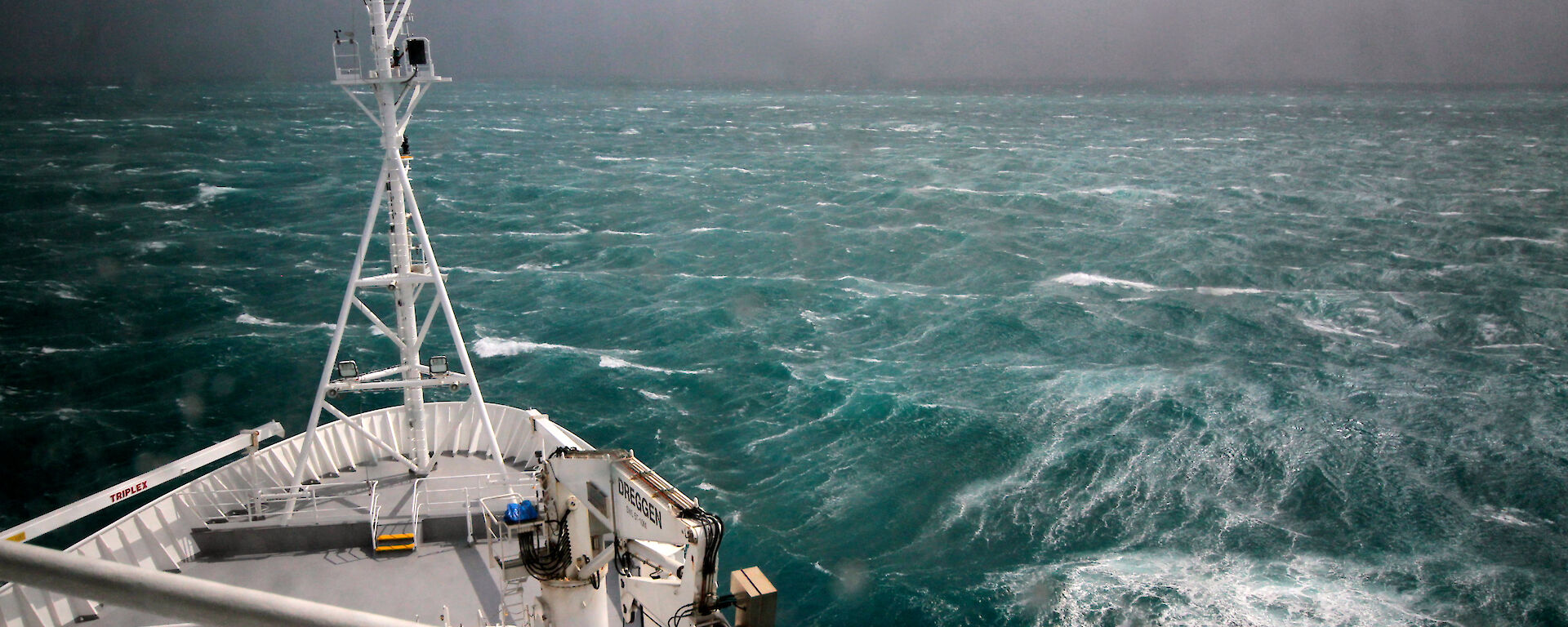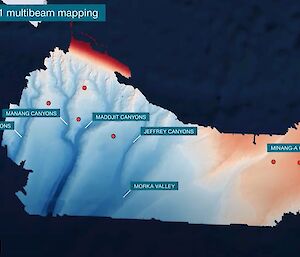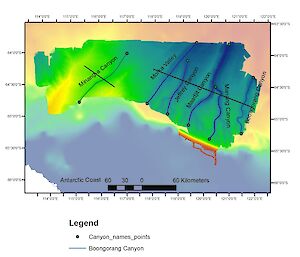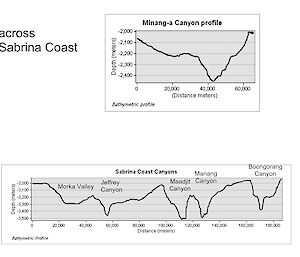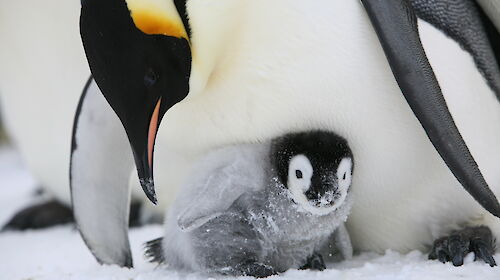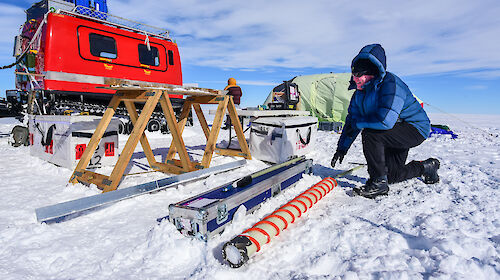The area, in the Southern Ocean off East Antarctica, was mapped in 2017 by scientists on board the CSIRO research vessel Investigator using multibeam sounding equipment and is seaward of the Sabrina Coast of Wilkes Land in East Antarctica.
The new names apply to a series of submarine canyons and a valley several kilometres below the ocean surface.
Five of them are words provided by the Noongar Aboriginal people of West Australia, whose traditional lands would have been adjacent to the Sabrina Coast before Antarctica and Australia separated about 135 million years ago.
The sixth canyon is named after eminent Australian marine scientist and microalgae researcher, Dr. Shirley Jeffrey (1930 – 2014).
They are:
Boongorang Canyons (Blowing in the wind)
Manang Canyons (Pool of Water)
Maadjit Canyons (Water Serpent)
Morka Canyon (Winter)
Minang-a Canyon (Whale)
Jeffrey Canyons (after Dr Shirley Jeffrey)
The role of the AAD Place Names Committee in helping to secure the approval was led by Mapping and Spatial Data Manager Ursula Harris, as the names progressed through the committee, the Australian Hydrographic Office and finally SCUFN.
She said it was a significant moment on the global stage and the arrival of new icebreaker RSV Nuyina in 2021 would only enhance Australian undersea mapping capabilities.
“SCUFN approving these names is exciting for Australia,” Ms Harris said.
“RSV Nuyina has two multibeam echo sounders, which will allow us to collect high resolution seabed information,” she said.
“This will result in quality maps that can be used to identify important features we can name for charts, science and management needs.”
Adding to the Australian success, Ms Harris said there was now an Australian member of SCUFN – Professor Mike Coffin of the Institute for Marine and Antarctic Studies.
“We haven’t submitted names, or had an Australian representative on the SCUFN committee, for many years,” Ms Harris said.
Professor Coffin was one of seven international nominations to the International Hydrographic Organisation and was unanimously selected to one of two five-year positions on the prestigious panel earlier this year.
He said it was an “an honour and a privilege.”
His first meeting was scheduled for St Petersburg in Russia in November, but was instead held virtually over two three-hour sessions.
In all, decisions were made on 35 proposals, including the Australian nominations.
The six new place names were put forward by the co-Chiefs of the 2017 survey, Associate Professor Leanne Armand (ANU) and Honorary Adjunct Fellow of Macquarie University Dr Phil O’Brien (formerly Geoscience Australia).
Dr O’Brien wrote to the South West Land and Sea Council, who approached the Noongar community.
“We thought it would be an opportunity to recognise and celebrate Aboriginal culture,” he said.
“After their initial surprise at the request, the Noongar Elders provided a list of Noongar words from which we chose five for major canyons on the continental slope.”
He said the Jeffrey Canyons were so named because they contained a thick accumulation of single-celled algae (diatoms), honouring Dr Jeffrey’s work.
The project was supported by the AAD via an Australian Antarctic Science Program grant.

